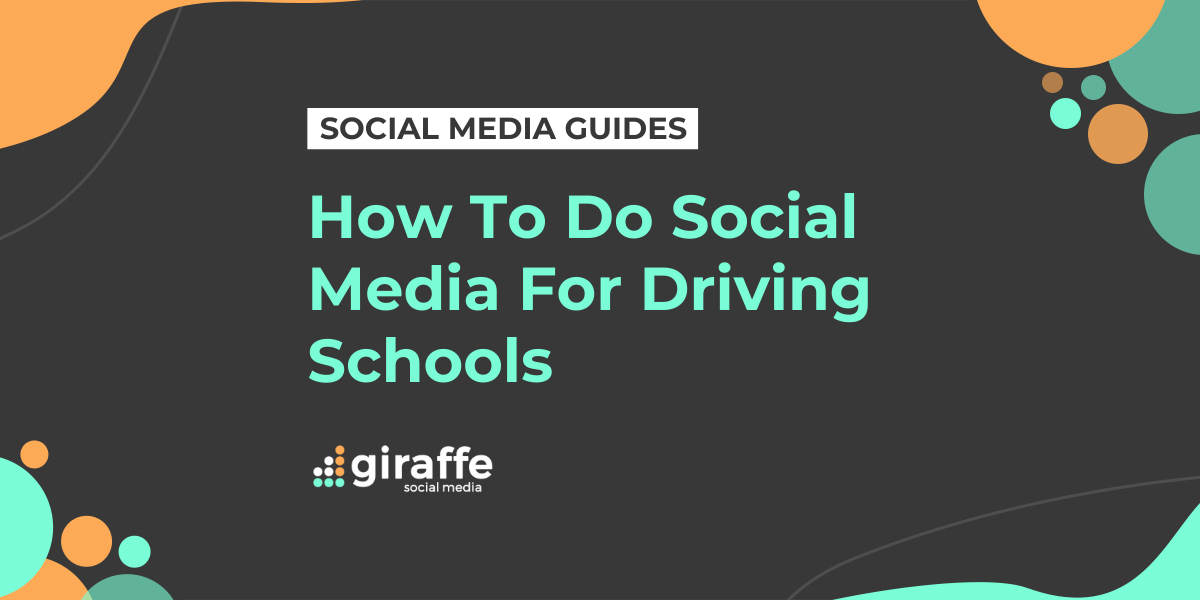The explosion of social media has undoubtedly garnered major interest from numerous businesses and, in turn, massively increased customer engagement and loyalty. With billions of social media users across all platforms, modern social media plays a crucial role in any marketing campaign, whether it aims to increase brand awareness, drive sales, or gain website traffic. Recent demand for driving instructors emphasises the importance of social media advertising for your driving school.
Over the past few years, the number of Approved Driving Instructors (ADIs) in the UK has dropped, with almost 40,000 registered driving instructors as of 2020. This increases the demand for driving lessons, making marketing for independent driving schools and instructors all the more important. Executing an effective social media strategy could dramatically increase the reputation of your driving school and help you promote to new students.
Why does my driving school need to be on social media?
Many people won’t blindly trust websites claiming to offer driving lessons, they will perform in-depth research into which driving school or independent instructor to go with, usually heavily influenced by social media. The more information you have available online, and the better presented it is, the more likely you are to build trust with potential clients.
For modern businesses, only having a website is often not enough to market yourself. It’s imperative now to have a social media presence alongside your website, especially when marketing to younger demographics. Driving schools primarily market towards young people looking to start driving, for which there are a range of social media platforms available to include in your social media marketing plan.
Facebook for Driving Schools
Long-reigning social media king, Facebook, currently boasts over 2.6 billion monthly active users (MAUs). For driving schools on social media, Facebook is a more visual social media pathway whereby you can target potential clientele through posts containing images, links, and videos. Creating a Facebook page for your driving school will help develop brand awareness, while gaining likes, comments and shares on your posts can highly publicise your school. Facebook even allows you to use the platform as a booking tool, meaning page visitors can easily become customers within just a few clicks.
Take care to write relevant posts about your driving school and the driving industry as part of a consistent posting schedule. Consistency and relevancy are two of the most important aspects of a social media marketing plan. Be sure to link your website to your Facebook page and list your contact number for maximum exposure.
Posting to driving lesson-related Facebook groups, and even creating a group on Facebook yourself, are great opportunities for exposure and building a social media community. People in the market for driving lessons for themselves or their children are likely to use social media as part of their research; this often includes joining relevant Facebook groups to find recommendations from other driving students.
Facebook also has extremely powerful advertising capabilities, with highly accurate targeting options across the massive user base. If you’ve got the budget to get stuck into Facebook Advertising, you’ll be able to run highly targeted and relevant ads to users interested in all things related to driving lessons.
Twitter for Driving Schools
Your Twitter username for your driving school must be relevant, snappy and memorable. All tweets should be welcoming in tone, well-written, and related to the driving and automobile industry. Leave irrelevant personal tweets – such as what you had for lunch – to your personal account, opting instead to show your human side through personal yet relevant posts.
Good community management will get you a long way in Twitter’s fast-paced environment, helping you build brand status within the world of Twitter. Make sure to update your Twitter regularly to preserve the interest of your followers. Spamming the feed is a definite no-no but posting regular updates at a consistent level is key for many social media platforms, and Twitter is no different.
Instagram for Driving Schools
Instagram is a highly visual platform, with the only post types all incorporating visual content (feed images/video, Reels, Stories, IGTV, etc). Using Instagram, you can advertise your driving school to your target demographic with photos of your students with their test pass certificates, photos of your car/the local area, and other relevant industry posts. You could even include a series of driving lesson/test tips and tricks on your Instagram page, promoting with the relevant hashtags, to reach a wider audience and promote your knowledge.
Make sure to censor out any valuable information, such as your students’ driver numbers, from the images and videos you post. Furthermore, you must obtain permission before posting visual content of your students online. Use this as an opportunity to let your students know you’d like to promote their success and perhaps get a testimonial/review to promote on your social media platforms.
LinkedIn for Driving Schools
LinkedIn, which boasts 675 million MAUs, is a great way to grasp the attention of potential driving students. By posting regular updates, actively participating in relevant group discussions, adding a solid contact list, and receiving testimonials/review, you can create new business links as well as reach potential clients. There are also plenty of working parents active on LinkedIn, who may be researching driving lessons on their child’s behalf, that you can target with posts and ads.
Thinking Outside the Box
When thinking about marketing for your driving school it’s essential to think outside the box to increase your brand awareness. You’re in a unique position compared to other business as you know exactly where your target audience is located, their general age range, and what they need from you.
Make sure to utilise offline/traditional marketing methods alongside your social media presence to draw attention from potential students who are out-and-about in your local area. For example, putting up posters around the community can help gain the interest of potential new clients. This also applies to adding your driving school branding to the car you use for driving lessons.
Driving school success often heavily relies on word of mouth and personal recommendations, so be sure to collect lots of testimonials and success stories from your students to help draw in new students.
Thought Leadership
Alongside industry-relevant social media posts, it’s also worth creating a regularly updated blog on your website that showcases your knowledge of the driving industry. Thanks to readily available information at their fingertips, those looking to start driving lessons will be extensively researching which driving schools to use and taking many factors into account. An important factor here is your knowledge and value as an instructor, as driving lessons take a lot of time, effort, and commitment from both the student and you as an instructor.
Communication
The key to successfully implementing a social media strategy that ultimately increases revenue is communication; communicate with your clients, potential clients, ask questions, answer questions, and list your contact details in an unmissable location. Make it known that you’re readily available to contact and interested in taking on new clients.
Competitions and Giveaways
One great way to increase your follower count, engagement, and brand awareness is to run competitions and giveaways on your social media. This could include promoting a special offer on lessons, discount codes and bundle lessons, or offering 5 free lessons to a giveaway winner. This is a win-win scenario in the long term, as gaining a reputation as a friendly and generous driving school will greatly improve your chances of positive student reviews, word-of-mouth referrals, and being known as a well-liked driving school in the area.
If you’re struggling with managing your social media on top of your busy day-to-day work life, make sure to keep up with our latest social media guides.
Editor’s note: This article was last updated in 2013 and has been updated for accuracy and relevance in May 2021.





